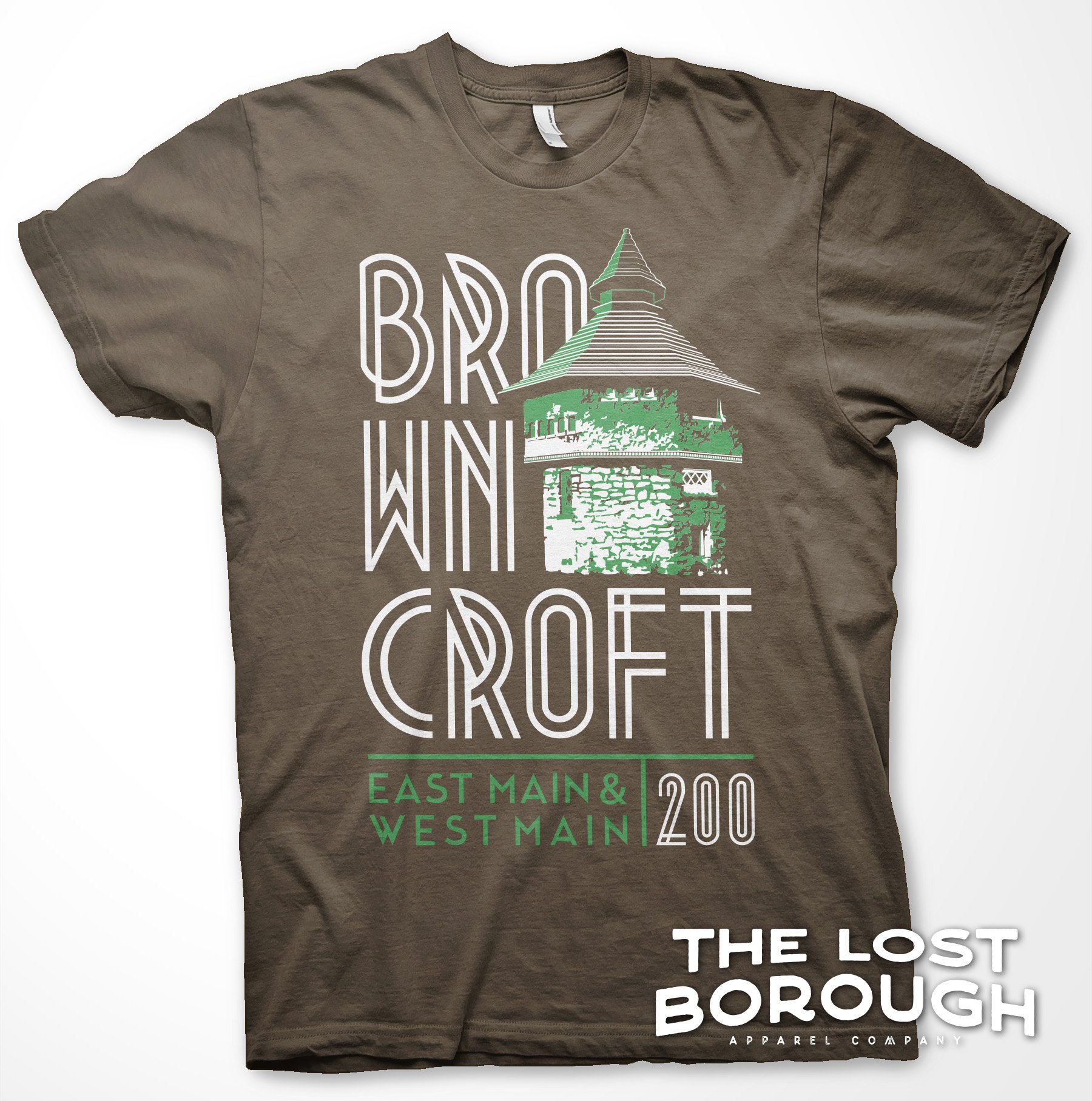 Image 1 of 2
Image 1 of 2

 Image 2 of 2
Image 2 of 2



Browncroft
A defining example of how Rochester transitioned from its Flower City prestige to more technological frontiers, the Browncroft neighborhood is an elegant time capsule of thoughtful development and planned community. Charles J. Brown’s foresight and careful strategy was not unique to the prominent nurserymen of his day, but he followed suit alongside James Vick, Horace Hooker, George Ellwanger, Patrick Barry, and others in transitioning his considerable land from flora development to real estate development.
The Brown Brothers Continental Nursery was a pillar of Rochester’s Flower City reputation, yet as the country continued to grow, expand, and advance, most of Rochester’s pillars saw an opportunity to use their many land holdings for developing neighborhoods and communities, as well as relieving themselves of the high risk weather variability of Rochester seasons.
As Charles Brown was winding down his nursery business in 1914, he thoughtfully converted land into plots and started selling the newly formed neighborhood tracts. To accent his newly formed community, he commissioned and placed black iron obelisks at major streets with the name of this new neighborhood: Browncroft. Where there was once an ornamental obelisk on every corner, only four remain today. As a further hidden gem, Brown chose street names that reflected his family’s history as English immigrants, coming from the Isle of Man.
The crown jewel of Brown’s development, was Browncroft Park. Originally situated between Winton Road, Dorchester Road, Ramsey Park, and Corwin Road, it was situated south of Brown’s personal residence. Consisting of a rolling green, large pond with resident ducks and a fountain, impressive rose garden, foot bridges, and a 25ft dovecote, which was home to Chinese pheasants, Pouter Pigeons, peacocks, and other ornamental birds. This magnificent birdhouse was a rare centerpiece and talking point of the whole neighborhood. Unfortunately, all good things must come to an end, and with the bankruptcy of Brown’s real estate business during the Great Depression, and his death in 1933, the park was left unmaintained and was eventually leveled in the 1940s for more housing. It remains a fond memory for older residents and even older pictures.
To celebrate this unique history, the Browncroft shirt design and colours reflect as much of Browncroft’s highlights as would create intrigue and interest in learning more about the neighborhood, from the brown and green colours of the area’s Flower City past, to the unique architectural feature of a dovecote as center piece to the neighborhood.
Rochester's long stretching network of trolley routes serviced the far reaches of the city; The 200 line of East Main and West Main traveled the length of Main Street, from the western border of Rochester, across Center City, and east into the heart of Browncroft neighborhood.
A defining example of how Rochester transitioned from its Flower City prestige to more technological frontiers, the Browncroft neighborhood is an elegant time capsule of thoughtful development and planned community. Charles J. Brown’s foresight and careful strategy was not unique to the prominent nurserymen of his day, but he followed suit alongside James Vick, Horace Hooker, George Ellwanger, Patrick Barry, and others in transitioning his considerable land from flora development to real estate development.
The Brown Brothers Continental Nursery was a pillar of Rochester’s Flower City reputation, yet as the country continued to grow, expand, and advance, most of Rochester’s pillars saw an opportunity to use their many land holdings for developing neighborhoods and communities, as well as relieving themselves of the high risk weather variability of Rochester seasons.
As Charles Brown was winding down his nursery business in 1914, he thoughtfully converted land into plots and started selling the newly formed neighborhood tracts. To accent his newly formed community, he commissioned and placed black iron obelisks at major streets with the name of this new neighborhood: Browncroft. Where there was once an ornamental obelisk on every corner, only four remain today. As a further hidden gem, Brown chose street names that reflected his family’s history as English immigrants, coming from the Isle of Man.
The crown jewel of Brown’s development, was Browncroft Park. Originally situated between Winton Road, Dorchester Road, Ramsey Park, and Corwin Road, it was situated south of Brown’s personal residence. Consisting of a rolling green, large pond with resident ducks and a fountain, impressive rose garden, foot bridges, and a 25ft dovecote, which was home to Chinese pheasants, Pouter Pigeons, peacocks, and other ornamental birds. This magnificent birdhouse was a rare centerpiece and talking point of the whole neighborhood. Unfortunately, all good things must come to an end, and with the bankruptcy of Brown’s real estate business during the Great Depression, and his death in 1933, the park was left unmaintained and was eventually leveled in the 1940s for more housing. It remains a fond memory for older residents and even older pictures.
To celebrate this unique history, the Browncroft shirt design and colours reflect as much of Browncroft’s highlights as would create intrigue and interest in learning more about the neighborhood, from the brown and green colours of the area’s Flower City past, to the unique architectural feature of a dovecote as center piece to the neighborhood.
Rochester's long stretching network of trolley routes serviced the far reaches of the city; The 200 line of East Main and West Main traveled the length of Main Street, from the western border of Rochester, across Center City, and east into the heart of Browncroft neighborhood.
Unisex Cut:
Shirt Color: Heather Brown
Shirt Type: 50/50 Poly-Cotton Athletic Fit T-Shirt










